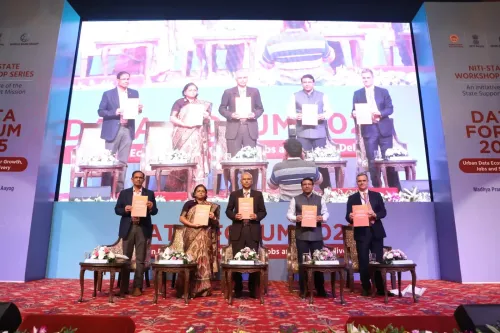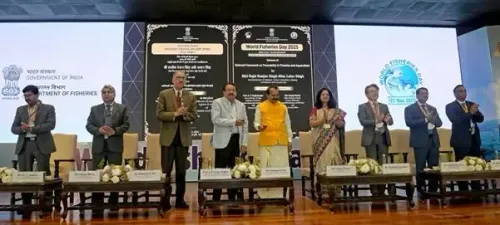Are India’s Labour Reforms Transforming the Workforce?

Synopsis
Key Takeaways
- Introduction of four unified labour codes.
- Minimum wage guarantees and social security benefits.
- Provisions for women's employment and youth opportunities.
- Enhanced workplace safety and health standards.
- Simplified regulatory framework for businesses.
New Delhi, Nov 21 (NationPress) On Friday, India marked a significant transformation in its labour regulation framework with the introduction of four unified labour codes. This initiative has been celebrated by central ministers, industry organizations, and legal professionals as a monumental advancement towards a more modern, equitable, and future-oriented labour environment.
Union Commerce and Industry Minister Piyush Goyal referred to the rollout of the new labour codes as a “new chapter in labour reforms”, emphasizing that these changes will empower workers and facilitate a more conducive business atmosphere.
In a statement shared on the social media platform X, Goyal pointed out that the reform guarantees a safer and more respectful workplace, asserting that the new regulations will foster increased opportunities for women, youth, and workers throughout India, thus propelling the vision of a ‘Viksit Bharat’.
Union Labour and Employment Minister Mansukh Mandaviya characterized this initiative as a transformational and historic decision for the welfare of India’s workforce.
He highlighted that the new framework ensures minimum wages for all employees, provides appointment letters for the youth, offers social security benefits to 40 crore workers, establishes equal pay for women, and mandates double wages for overtime.
Mandaviya also pointed out provisions for annual complimentary health check-ups for workers over 40, aligning social justice with global standards, and enhancing safety measures for those engaged in hazardous occupations.
Petroleum Minister Hardeep Singh Puri described the reforms as a significant step towards cultivating an empowered and self-sufficient workforce, reinforcing India's ambition to evolve into a developed nation by 2047.
Industry association Nasscom also endorsed the changes, asserting that this transition marks a pivotal moment in modernizing India’s labour landscape.
The organization indicated that businesses can anticipate a smoother adaptation process as the new structure will be rolled out in a phased and systematic manner.
Nasscom noted that these reforms enhance clarity regarding employment terms, bolster workplace safety and health standards, and strengthen the social security framework.
Legal and policy analysts echoed similar sentiments, underscoring the enduring nature of this transformation.
Sajai Singh, Partner at JSA Advocates and Solicitors, expressed that the codes mirror contemporary workplace dynamics by recognizing new employment types, including gig and platform-based jobs.
He remarked that the reforms are progressive, particularly in enabling women to work night shifts and ensuring social protections for previously unacknowledged workforce groups.
Another partner at the firm, Minu Dwivedi, stated that this overhaul was crucial, as previous labour laws were outdated and tailored for a manufacturing-centric economy, failing to account for the rise of services, technology, freelancing, and gig employment.
Preetha S, another Partner at JSA Advocates & Solicitors, termed the implementation a “pivotal moment”, highlighting that the new framework simplifies previously disjointed regulations, allowing companies to update their workforce strategies, compliance protocols, and HR policies.
Gerald Manmohan, also a Partner at JSA, noted that this reform signifies a critical juncture in India's labour governance following nearly five years of procedural groundwork.
The Indian Staffing Federation (ISF) also welcomed this rollout, asserting that the reform will facilitate formal job creation and unlock the regulatory flexibility needed by the staffing sector.
The ISF remarked that consolidating 29 disparate labour laws into four streamlined codes is a long-anticipated move towards reconciling worker protection with employer adaptability.









